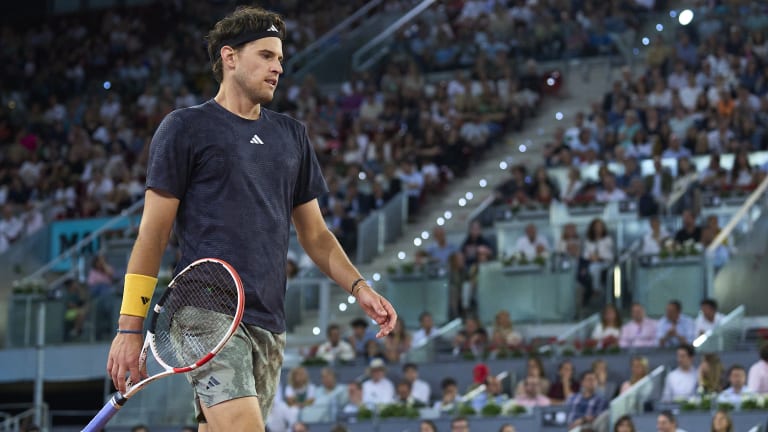Tennis.com Interview
Nearing 30, Dominic Thiem thinks "of a life beyond tennis," but the clay-court star isn't slowing down
By May 08, 2023Tennis.com Interview
Jan-Lennard Struff sees Munich title defense bid as 'perfect opportunity' to turn 2025 around
By Apr 14, 2025Tennis.com Interview
Lorenzo Musetti manifested his 'special' week in Monte Carlo with first Masters 1000 final
By Apr 12, 2025Tennis.com Interview
No logic, just a feeling: Andrey Rublev "always knew" he wanted to work with Marat Safin
By Apr 07, 2025Tennis.com Interview
Brad Gilbert, Patrick McEnroe weigh in on U.S. men's tennis evolution
By Apr 05, 2025Tennis.com Interview
Patrick McEnroe decries Jannik Sinner suspension, tags Joao Fonseca as future star
By Apr 04, 2025Tennis.com Interview
On chicken farm, Danielle Collins embraces “crunchy granola lifestyle”
By Apr 03, 2025Tennis.com Interview
Feeling like a teenager, Alizé Cornet, 35, makes triumphant comeback from retirement
By Apr 02, 2025Tennis.com Interview
Danielle Collins launches iconic richsport merch collab
By Mar 07, 2025Tennis.com Interview
Zizou Bergs: From TikTok to Top 50 in Indian Wells?
By Mar 06, 2025Tennis.com Interview
Nearing 30, Dominic Thiem thinks "of a life beyond tennis," but the clay-court star isn't slowing down
Might the Austrian at last be healthy enough to charge back up the rankings?
Published May 08, 2023
Advertising
Advertising
Advertising

Thiem has opted to play two ATP Challenger Tour events, in Austria and France, over the next two weeks, as opposed to the Master 1000 tournament in Rome.
© 2023 Quality Sport Images